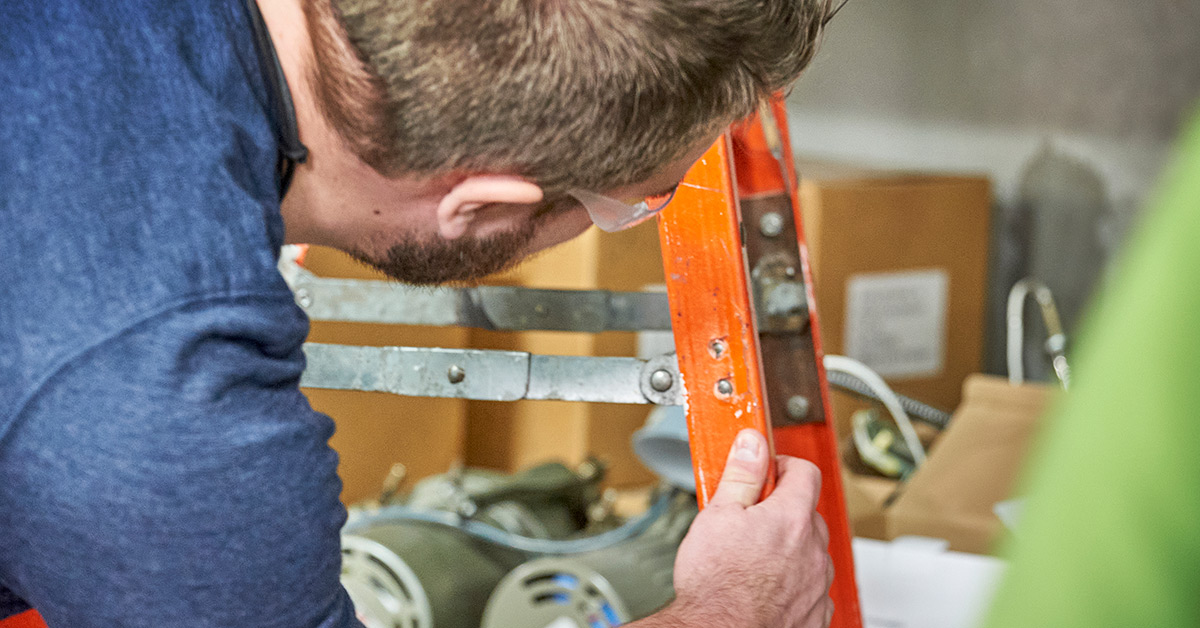Properly conducting ladder inspections
Date Posted: 08/03/2020

Employees must inspect portable ladders before the first use on each shift to identify defects that could affect the safe use of the ladder. An unsafe or damaged ladder must be removed from service to prevent workers from getting hurt.
OSHA has clarified that workers should need not to inspect ladders multiple times per shift, unless there’s a reason to believe the ladder was damaged. For example, if a ladder tips over, falls off a structure (like a roof or vehicle), is subjected to chemicals, or is struck by an object or vehicle, the ladder must be inspected to ensure that it is still safe to use.
What to look for
Prior to the 2016 revisions in the walking-working surface regulations, the regulations provided lists of items to check during ladder inspections. When revising the rule, OSHA removed those lists, stating that the inspection procedures were both over-inclusive and under-inclusive. Basically, the listed items might have included things that weren’t needed, and might also have missed items that should be checked.
For example, inspections after a tip-over required looking for dents or bends in side rails and rungs, checking hardware connections, and examining rivets for shearing. However, the list did not require checking the ladder footing. That oversight might have caused employers (or employees) to think that inspecting the ladder feet was not required, when in fact the feet might be the problem.
OSHA therefore adopted performance-based language, allowing employers to determine the scope of each inspection. For instance, inspections at the start of the shift might include checking the ladder to ensure the footing is firm and stable, engaging spreader or locking devices to see if they work, and identifying any missing or damaged components. If a ladder tips over, the employee might focus the inspection on identifying whether footing problems may have caused the tip-over, or verifying that the rungs are still firmly attached.
This approach allows employers to tailor inspections for the situation. Of course, employees should be trained to conduct inspections, since they cannot properly inspect a ladder if they don’t know what to check, or if they can’t identify a problem.
Inspection tips
OSHA doesn’t require documenting ladder inspections, but providing a checklist of items to examine could serve as a reminder to employees, and might help demonstrate to OSHA that you're encouraging and enforcing inspections.
If an OSHA compliance officer visits your facility, he or she may ask workers when they conduct ladder inspections, and what they look for. If the employees cannot answer those questions (or worse, if the compliance officer sees a ladder with defects being used), there will likely be a presumption that ladder inspections are lacking.
How Safety Management Suite Can Help
For a sample daily checklist for portable ladders, check out the Checklists tool in the Audits area of the J. J. Keller® SAFETY MANAGEMENT SUITE. In addition to a checklist for portable ladder, you’ll find one for fixed ladders, along with numerous other checklists and self-audits.
E-mail Newsletter
Sign up to receive the weekly EHS Insider email newsletter for safety articles, news headlines, regulatory alerts, industry events, webcasts, and more.